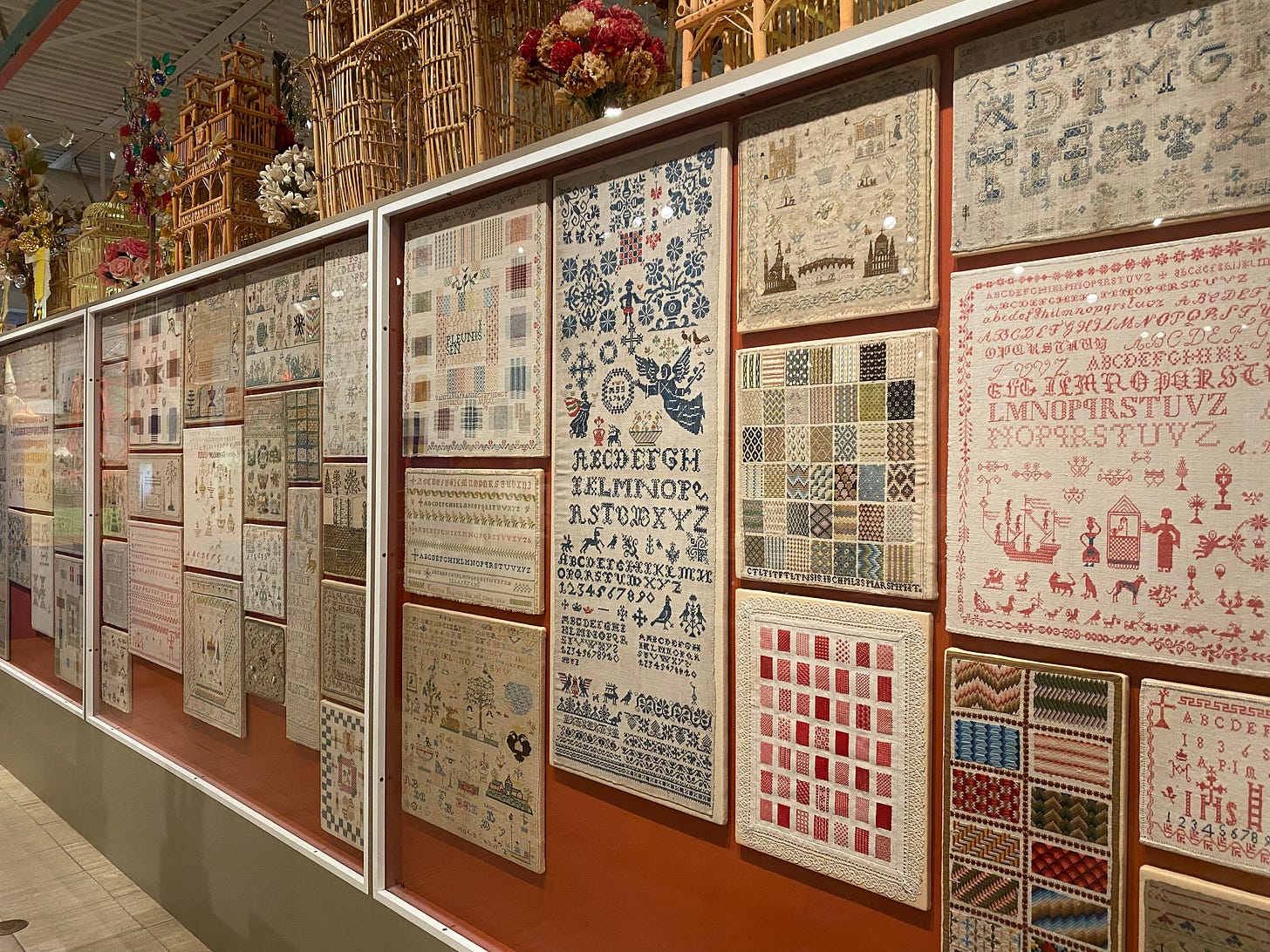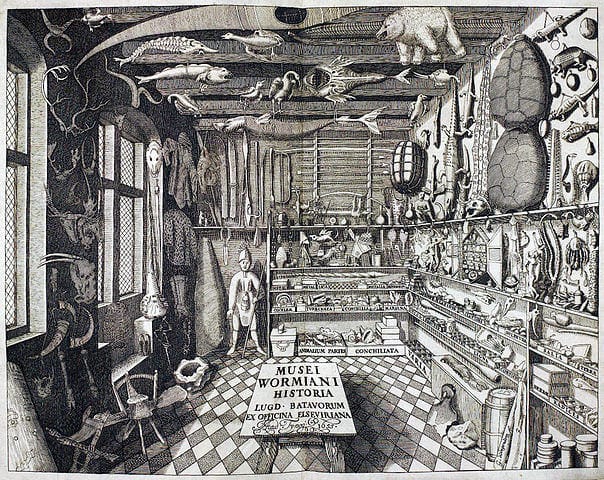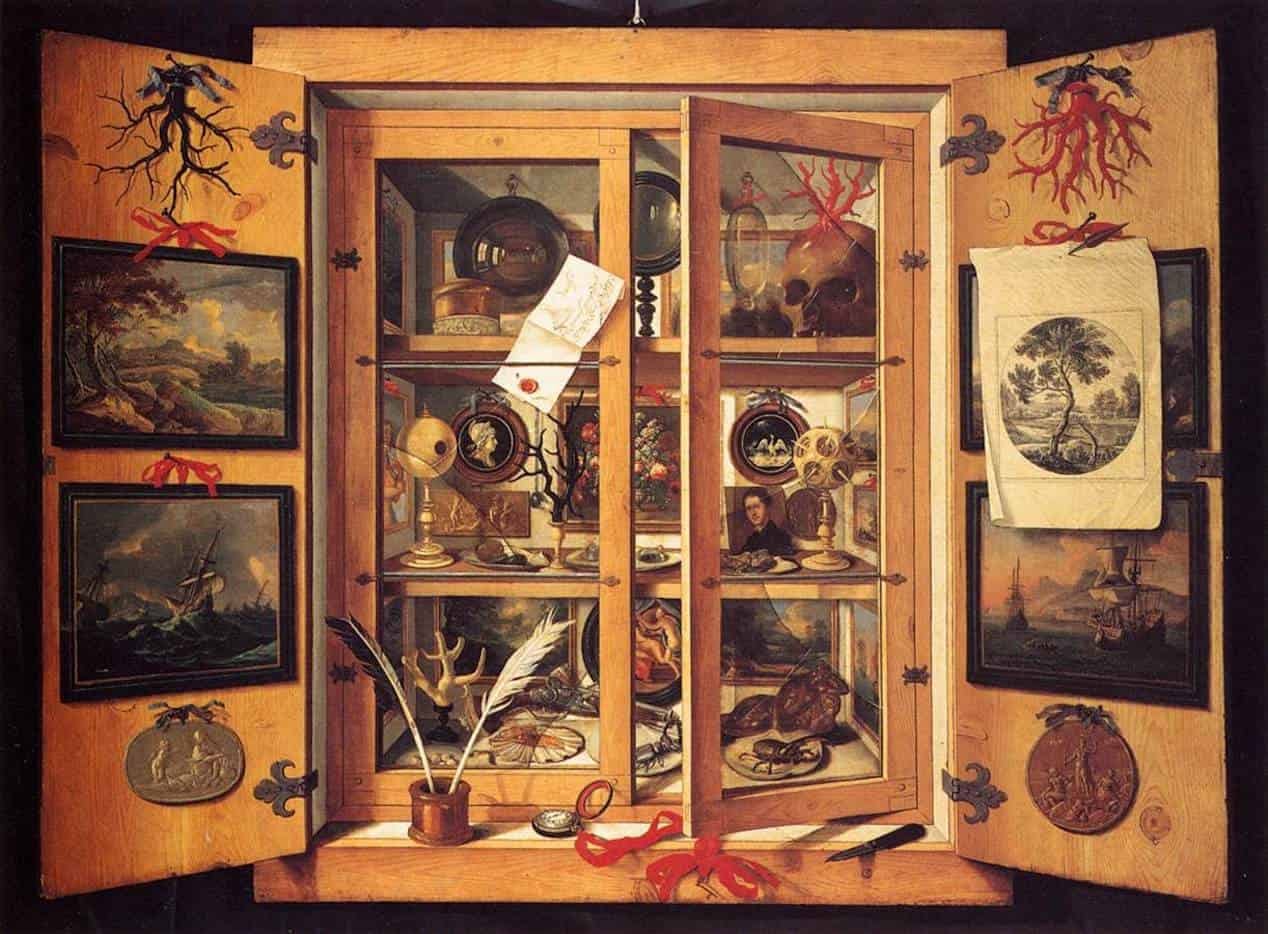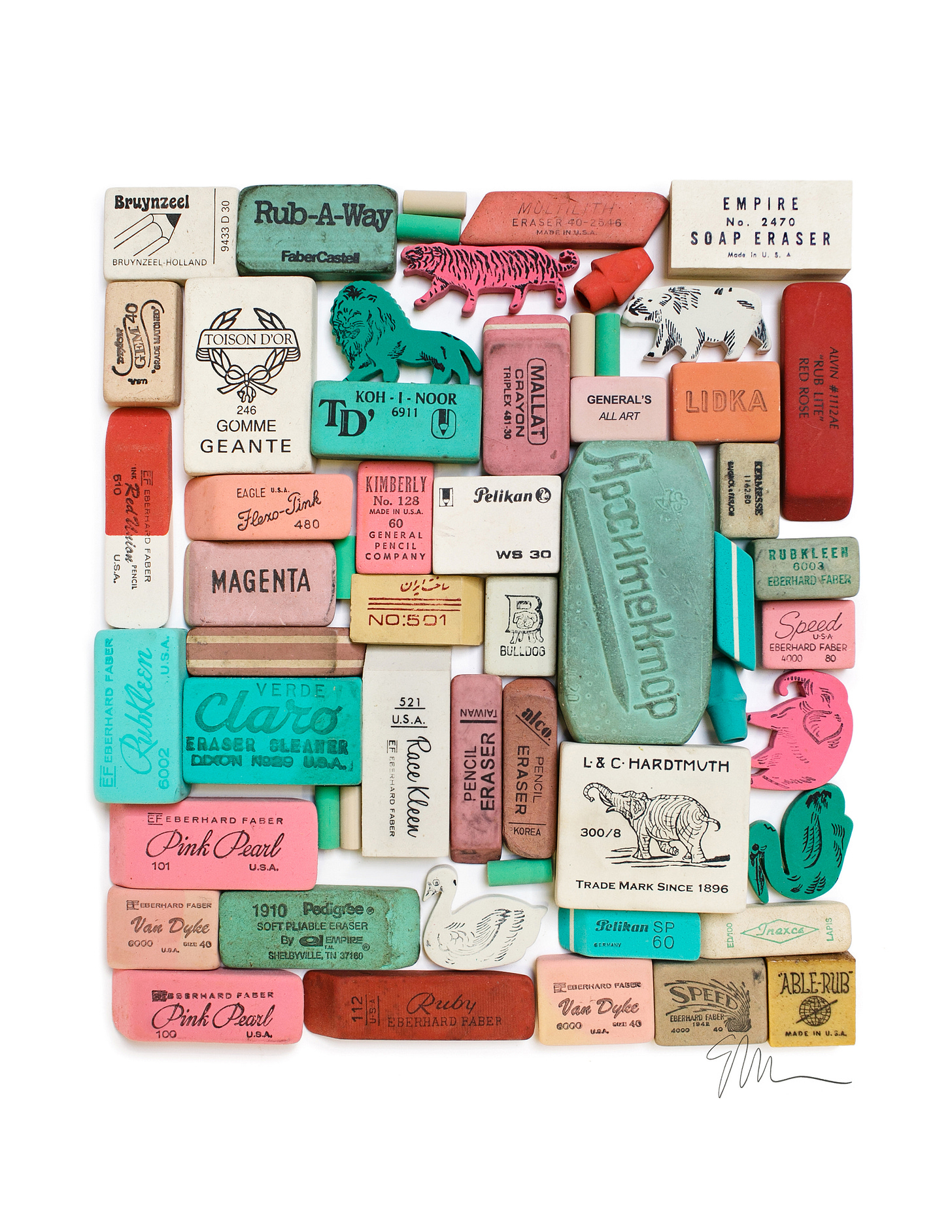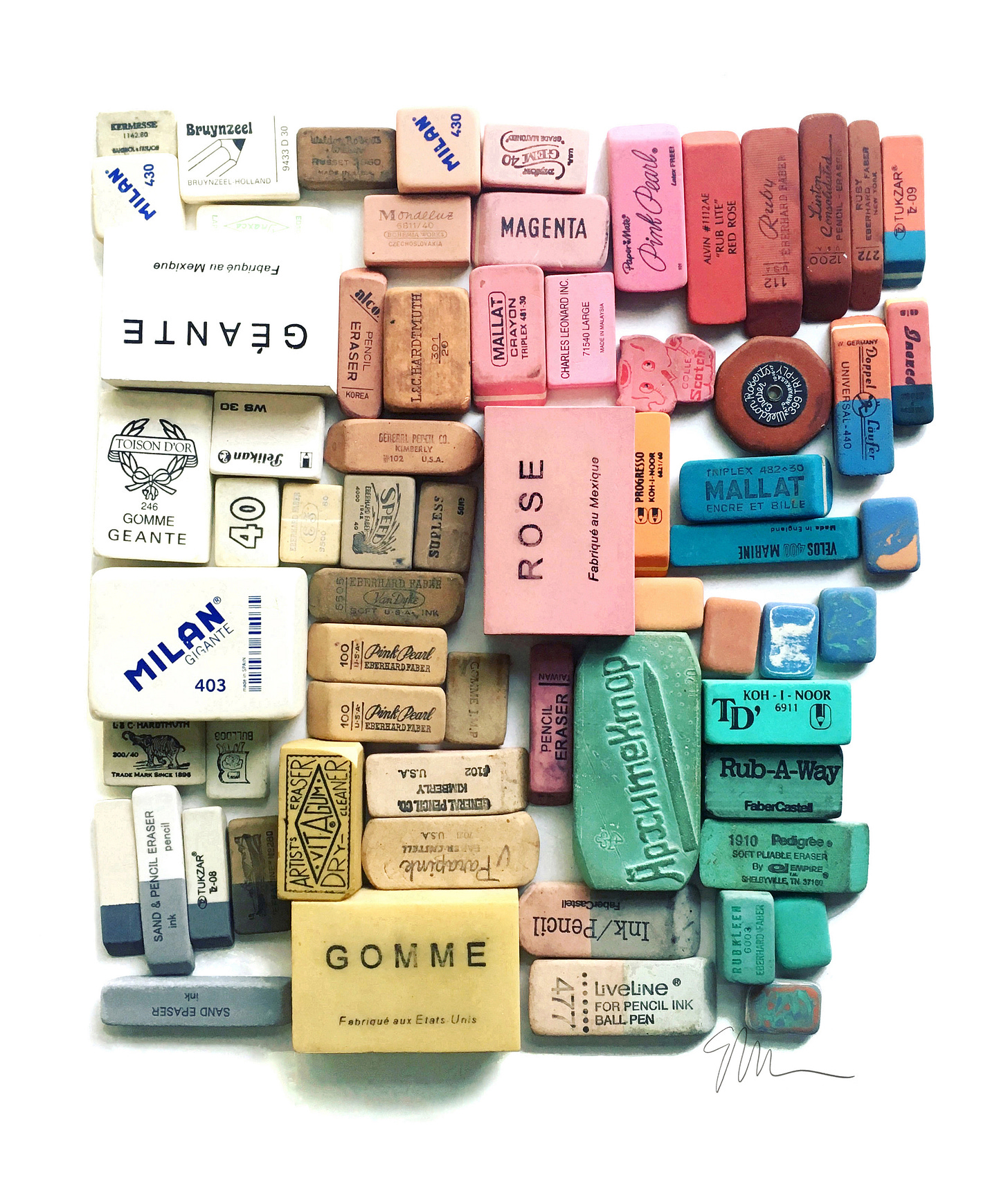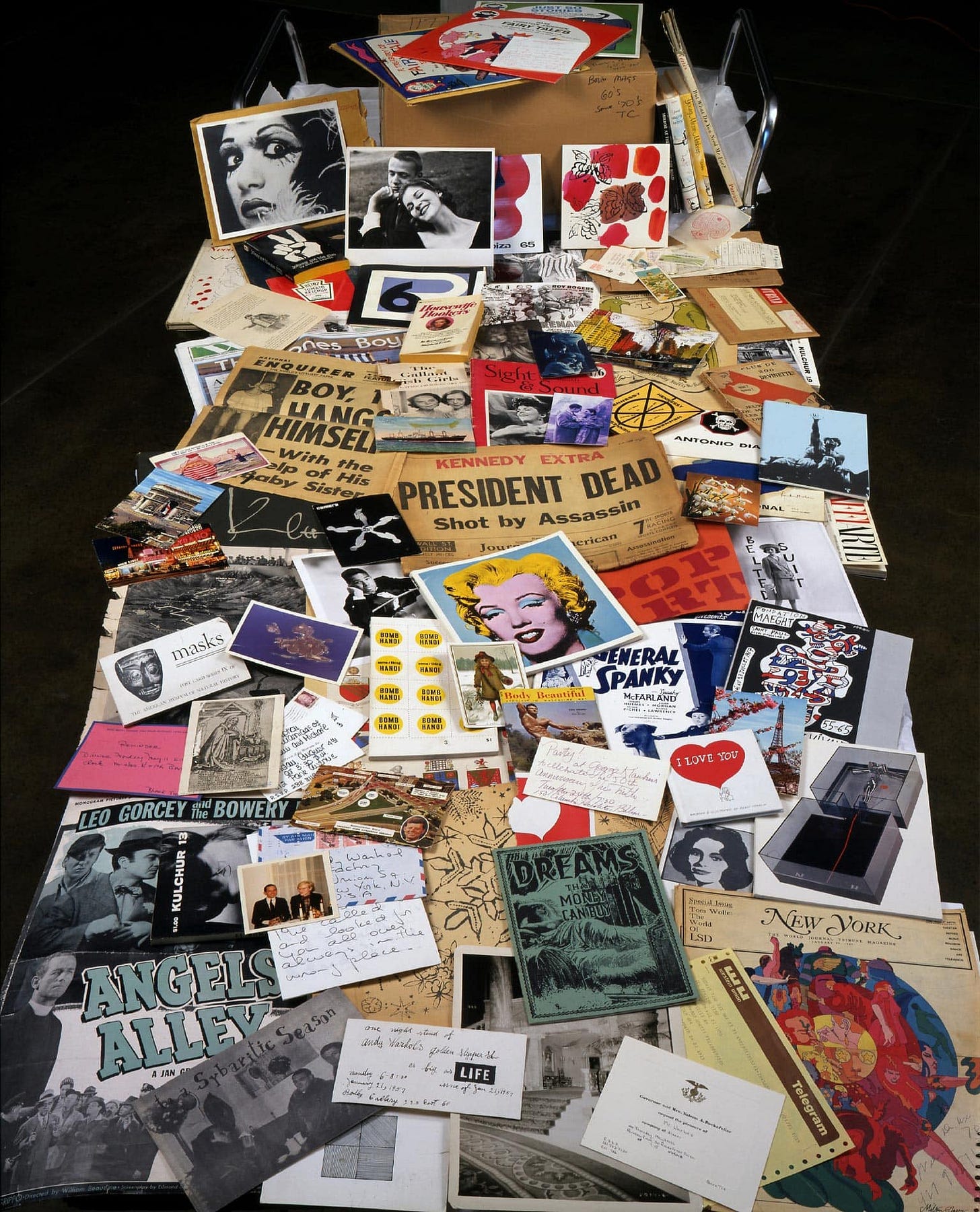Artist's Collections
A brief history of collecting, and why creative people love STUFF so darn much.
Heelllloooo GUT peeps.
Don’t forget the DrawTogether Classrooms Art Assembly is this Thursday at 4pm PST/7pm EST! Know an educator (school, home, library, you name it) who wants to bring more drawing and curiosity/confidence/care-boosting creativity into their learning environment? Spread the word.
Thanks again to last week’s visiting artist Jack Muir Laws for the eye-opening lesson on Nature Journaling. A selection of GUT members’ spectacular assignments are at the bottom of this dispatch. Here are the randomly selected GUT Member-winners of the Nature Journaling giveaway. Congrats to:
Anne Kenny: Tickets to a special Wild Wonder Foundation celebration w/ Jack Muir Laws and Amy Tan
littlesquaresketchbook: The Nature Journaling Dream Starter Kit, including paints, binoculars, guides, sketchbooks and more.
Ryan Johnson: Passes to the 2023 Wild Wonder Nature Journaling Conference
Winners, email hello@wildwonder.org by Monday at 12pm PST to claim your prize! Thanks Jack, Beth and everyone at Wild Wonder!
Now onto our new week, new topic, new world…
The Art of Stuff. I mean Collecting.
“Artists are born collectors” - Louise Nevelson, Artist
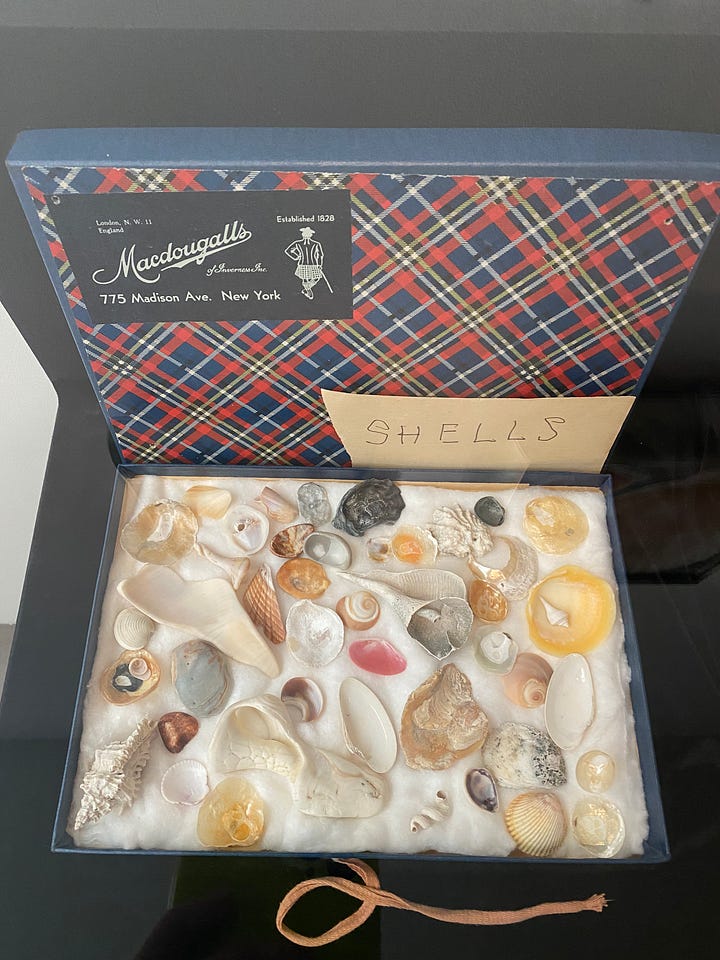

Every artist I know collects ideas, feelings and experiences. We collect stories, images, information, history, literature, references, moments… and use them as source material to make art.
I also know a lot of artists I know collect stuff. Less heady, sure, but how fun is a flea market?? I know artists who collect vintage public library posters. Pebbles from around the world. Pez dispensers. Some proudly display the keepsakes in their home or studio. Others tuck the objects away in drawers. Like Georgia O’Keeffe did with her collected shells above, some artists use their collections as source material for making art.
I recently visited the Girard exhibit at the International Folk Art Museum in Santa Fe. Are you familiar with it? The permanent exhibition is a lifetime of the couple’s collectingon display - over 10,000 objects. (And that’s just 10% of the couple’s collection!) Objects are hung against colorful backgrounds and cover every surface from the floor to the ceiling. There are no title cards or explanations - just mountains of gorgeous, curious, handmade objects from around the world.
It’s overwhelming in all the best ways.
And while one could argue each object in the massive collection is culturally significant in one way or another, when you’re in the galleries it’s impossible not to feel for a moment that it’s also just a lot of Stuff.
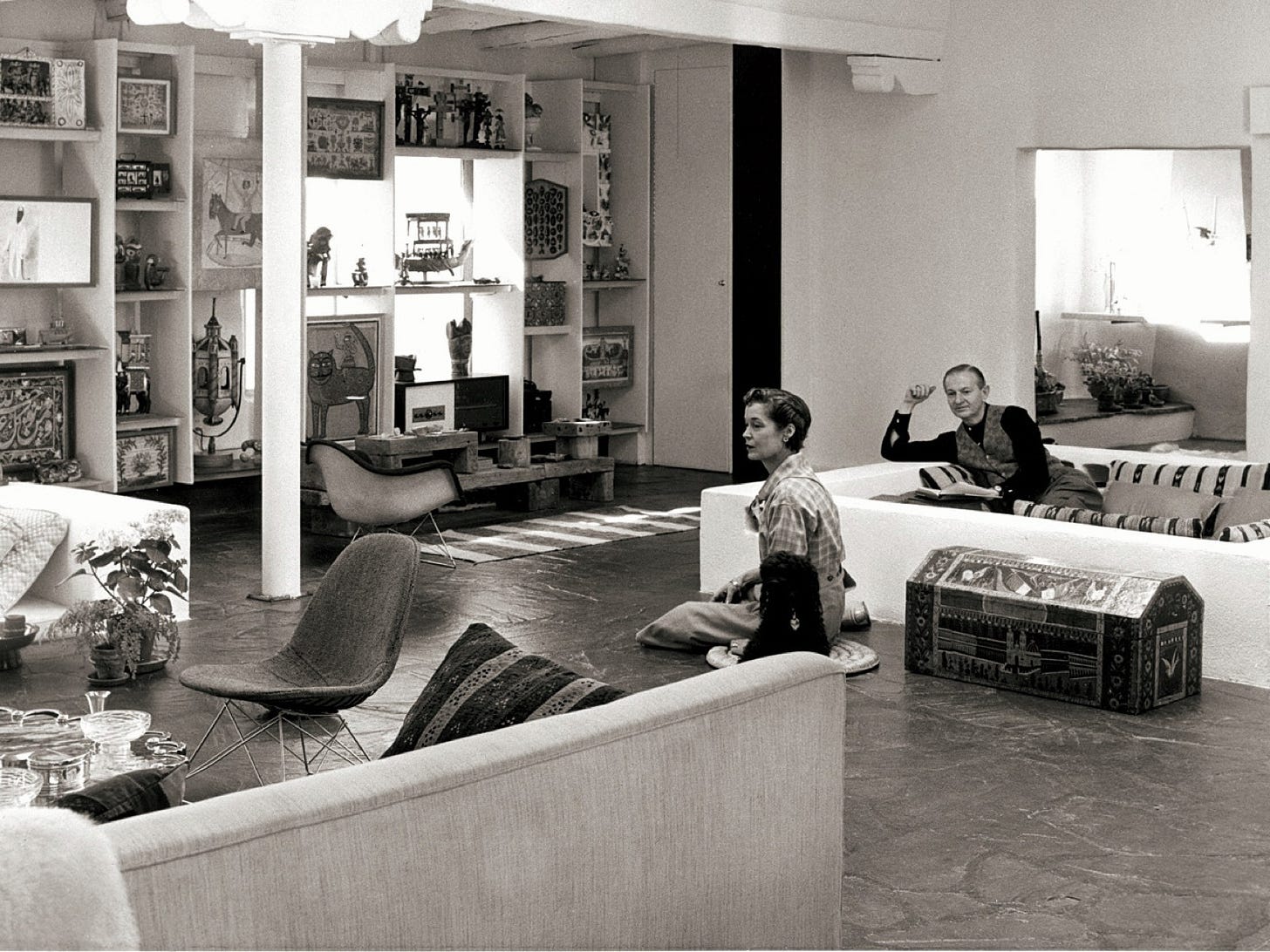
I love stuff.
I’m no hoarder, tho. I am picky about the things I collect. I love objects with a meaningful, personal story. I’m a sucker for a vintage family photo album, or an anonymous diary from the 20s. I believe objects can hold a person’s energy, or contain a bit of their soul or power. If an object held meaning for someone, it holds that heavy meaning for me. A generous person might call this sentimental. A psychologist might call it attachment issues.
I call it being an artist.
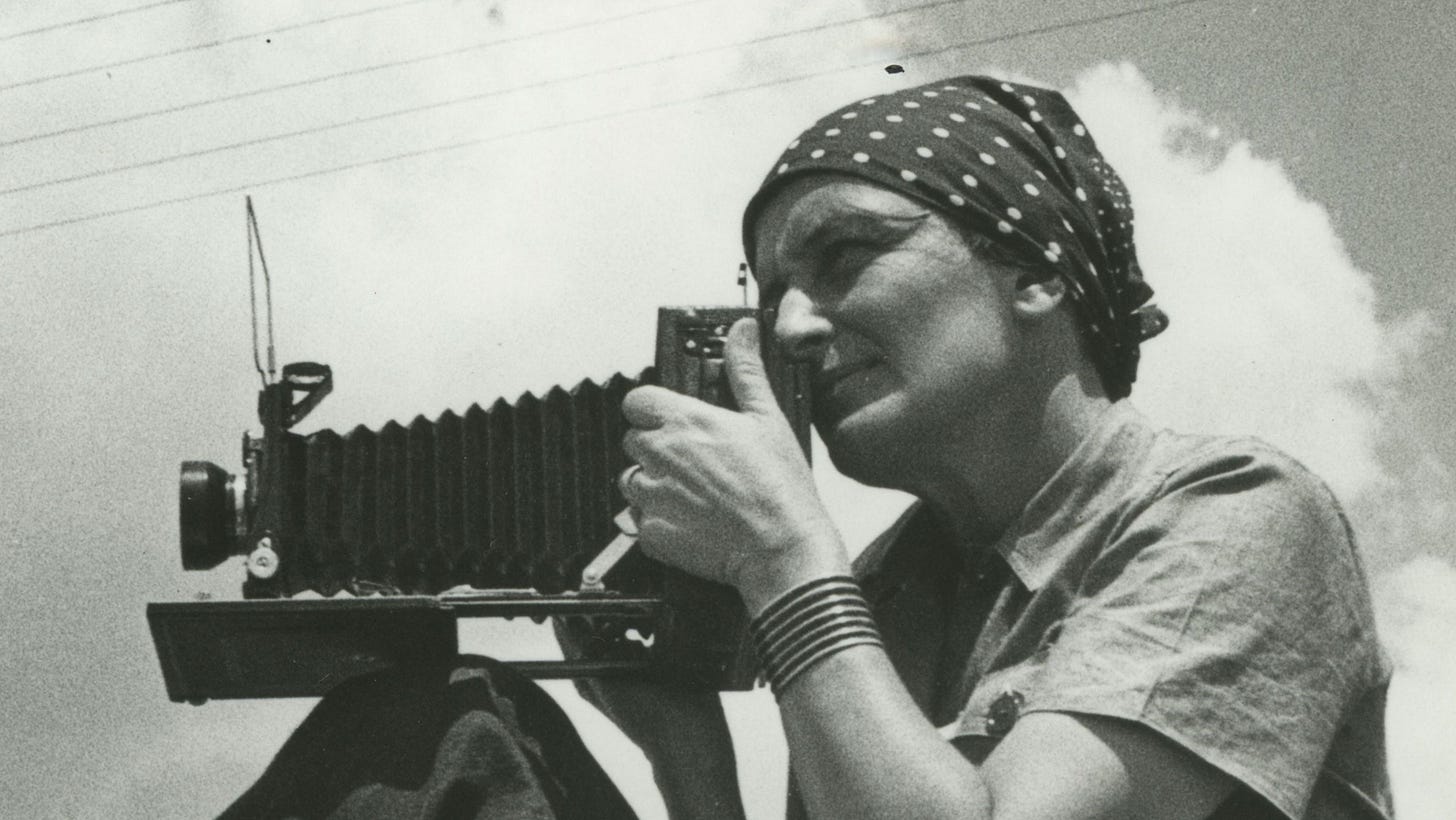
I’m always on the hunt for objects related to the artist/photographer/activist Dorothea Lange. Things she made, tools she used, items that look like something once owned. Last week I almost spent an outrageous amount of money on a bracelet because it looked like one Dorothea wore much of her life. (Reader, I passed. The salesperson had an attitude.)
Why did I almost spend a ton of money on an object like that? I suppose I believe Dorothea-related objects contain her wisdom and experience. And my magical thinking dictates that if I possess those objects, those Dorothea-qualities transfer to me. In other words, I AM NUTS.
But really, how is this so different from the art we hang on our walls? We select images that represent political or personal views, that bring us pleasure, and were maybe made by someone who we respect. We tell ourselves and the world a little about who we think we are - and who we would like to become.
The identity forming power of STUFF.
All this made me wonder: when did humans start giving objects magical powers? How did stuff become an extension of who we are/who we want to be? How and when did human beings start collecting?? I realized I had no idea.
So I did some digging. Turns out the history of collecting is fascinating - and it’s the foundation of our entire modern museum system.
This week I give you a super brief but fascinating overview of the history of personal collections, share some inspiring personal collections by artists you know and love, and then give us a collection-related drawing assignment guaranteed to make even the least sentimental among us obsess over an object.
Ready?
Grab some tchotchkes, and let’s dig in.
How did collecting become a thing?
It goes way back.
105,000 years ago, people in the Kalahari region of Southern Africa collected crystals, bringing them back from other regions and keeping them close.1 Later, in ancient civilizations of Egypt, Babylonia, China, and India, people accumulated precious objects to reflect their wealth, power ands status, keeping them in temples, sanctuaries, and tombs.2
It wasn't until the Italian Renaissance that individuals started collecting objects as a hobby and displaying their collections in private settings - namely, their homes.
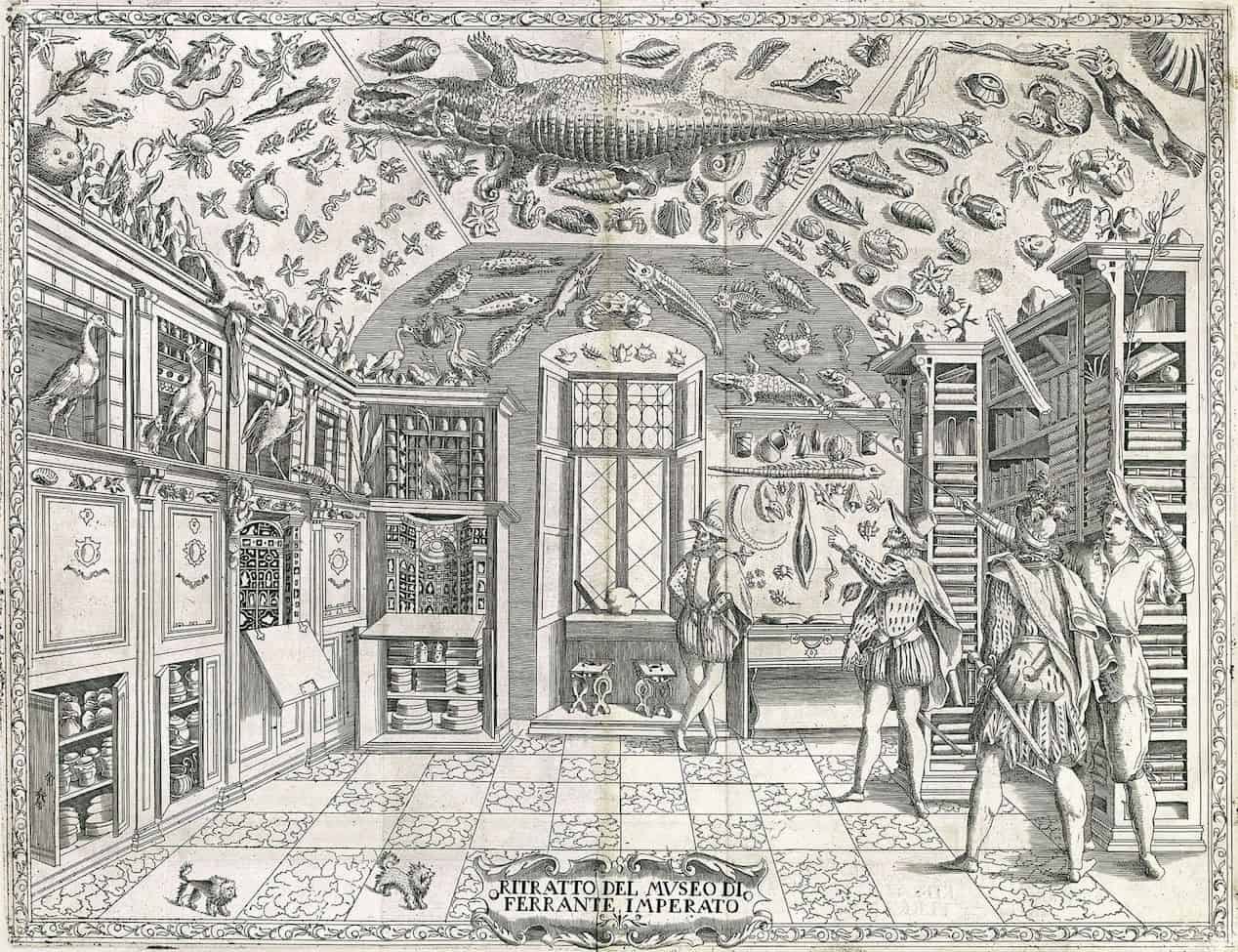
Cabinets of Curiosity
Also known as wunderkammer or ‘Wonder Rooms’, Cabinets of Curiosities emerged in the 16th century. Depending on the volume of the collection, these rooms could also be a drawer or a cabinet. They contained private collections of unusual objects of interest, often from around the world. Much like today’s museums, people used these collections as a way to tell stories about the natural world - and themselves.3
Artistocrats gathered and displayed their collections as a way to display status, weath and world view. They were fodder for conversation and entertainment. And while the cabinets contained a lot of objects related to archeology or zoology, the “cabinets were not meant to be scientific—they were a place of the imagination in which those who could afford to do so.”4
As a collection, the wunderkammer’s objects formed a story of who the collector imagined themselves to be, even if it was far from the truth. Many of the object were in fact purchased, and not collected through hard-earned human experience. The objects were aspirational. Each object told a story about who the collector wanted to be in the world. Not who they actually were.
Cabinets of Curiosity became Museums
Renaissance Cabinets of Curiosity were the precursors to museums. Yup, no surprise: public museums started as rich people’s personal collections. “They held art, zoological and geological specimens, archaeological and anthropological finds and other travellers' spoils from across the globe, largely before any of these academic areas really existed.”5
At a time when people believed humans were the center of the universe, these collections put the rich curator/storyteller at the center of the world.
By the 18th century, cabinets began to fall out of fashion. Some rich collectors donated their collections to universities. Others were forced to give up their riches - for example, during the French revolution: 6
In 1793, the Revolutionary government nationalized the King’s property and declared The Louvre palace a public institution under the name Museum Francais. It had already become an art museum of the royal art collection when King Luis XIV moved to the Versailles.
For the first time, the royal collection was available for all to see. The people of Paris entered and roamed in the first truly public museum in history. At the same time, the Louvre became the first truly national museum. The museum did not belong to any king or any member of the aristocracy….
It’s interesting to think about the origin’s of contemporary museums and libraries. Who decides what is worth keeping and why/why not. What stories are valued and who those stories ultimately serve. Who benefits from the privately owned artwork that is loaned, displayed, and eventually auctioned.
Maybe we haven’t really come all that far from the Aristocrat’s cabinet of curiosities after all.
But what does all this have to do with us at the Grown-Ups Table??
Ask yourself: do you collect anything? If so, what? And why? What purpose does the collection serve? Do you display it? Do you hide it? Is it personal or professional or political or…? What does it say about you? Your values? What is the story those objects tell?
And. As artists, we collect for another reason entirely. We collect for creativity. We collect for source material. For inspiration. As artists, our collections are not extractive, but creative. And, like anything creative, they are inherently valuable. We collect to make art.
Artists Who Collect
Just for kicks, here are a few more artists worth noting for inspiration (or justification) and relevant to our assignment this week.
Lisa Congdon
My friend, artist and illustrator Lisa Congdon, is a consummate collector. She even published the book A Collection a Day, a collection of photographs of her collections and some drawings of her imagined collection. Her collection of erasers is especially astounding.
Andy Warhol
Oh, Andy. What didn’t you collect? Cookie jars. Chairs. 313 Watches. Warhol lived in a five story townhouse that was so jam packed with stuff that he could only use two rooms. He kept everything, and he’d keep it safe in what he called a time capsule.
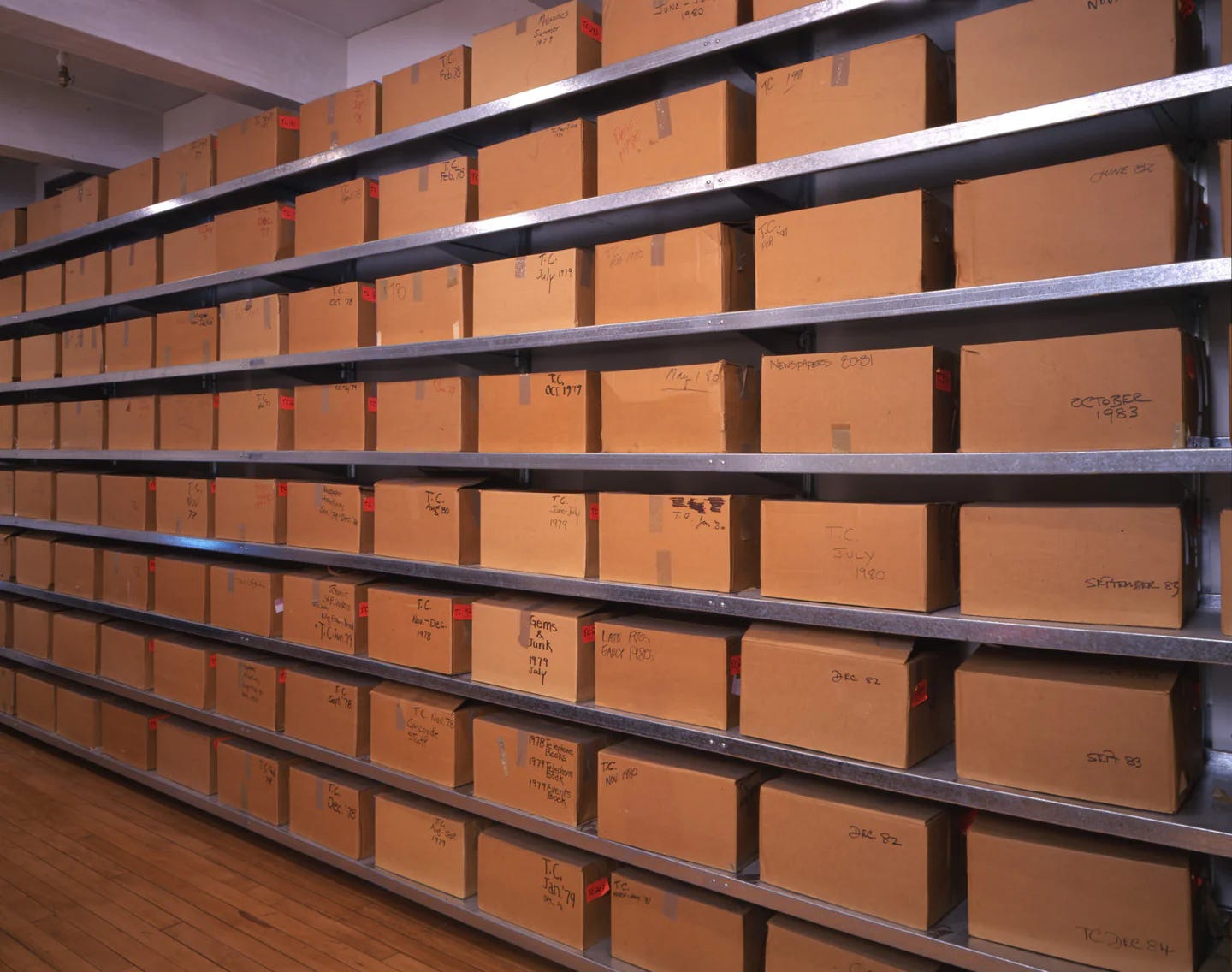
Perhaps the collection that best offers a glimpse into Warhol’s mindset were his time capsules. Every month, he would open a new plain brown cardboard box, filling it with different scraps of ephemera that he encountered every day over the next four weeks. This included everything: takeout menus, letters from other artists, labels, and anything else that crossed his path. At the end of the month, it was taped up, labelled, and put into storage.7
Receipts, fliers, work notes, ticket stubs, subway passes... A half eaten sandwich and a Basquiat were found in the same box.
Maira Kalman
Maira is a consummate collector of objects and stories, both. I think she and I are on the same page about objects holding stories and meaning. Though from the looks of her clean, bright, open studio, she is a bit more judicious about which stories she keeps and which she throws away.
Maira curated a show at the Cooper-Hewitt National Design Museum of objects from their collection that held rich, fascinating stories, and then created the book My Favorite Things, paintings and text reflecting on the meaning behind objects, tying her own collected objects and memories with those in the museum’s collection. From the Jewish Book Council:
“Objects inhabit the memories,” the author wisely tells us, and it is true, even if they were not initially our objects or memories; magically, they haunt us. The wonder is that they have been carefully considered, studied, drawn, and looked at. The wonder is that they were saved and collected at all.”
I mean, Maira is one of the wonders of the world. But I don’t think it’s so rare for people to hold onto, consider and celebrate stuff like Maira does. Like I do. Or is it?
Is it?
Assignment
I recognize not everyone is a collector. But I do think that every single one of us keeps an object close that contains special significance That holds a some special power or meaning. A person. A history. A hope or dream. A regret or failure. A story.
Here’s our drawing assignment this week:



